Preparing for a solar eclipse? Eclipse glasses are a must-have to safely observe this astronomical phenomenon without damaging your eyes. Unlike regular sunglasses, these glasses are designed to protect against the sun’s intense rays. In this guide, we’ll help you find the right eclipse glasses to experience the 2024 eclipse, ensuring safety, clarity, and comfort.
Key Takeaways
- Eclipse glasses are essential for safely viewing solar eclipses, featuring special-purpose solar filters that are thousands of times darker than ordinary sunglasses, to prevent severe eye damage by blocking harmful UV and infrared rays along with 99.99% of intense visible light.
- The best eclipse glasses of 2024 include Rainbow Symphony’s Eclipse Shades for overall quality, American Paper Optics for budget-friendly quality, and Rainbow Symphony’s premium options for customization and enhanced features, all of which must adhere to the ISO 12312-2 standard for eye safety.
- Aside from eclipse glasses, other safe solar viewing methods include handheld solar viewers, appropriate welding filters, and telescope or binocular filters, but for any type of viewer or solar photography, correct usage and settings are critical to ensure proper protection and image capture.
Understanding Eclipse Glasses: The Gateway to Safe Solar Viewing
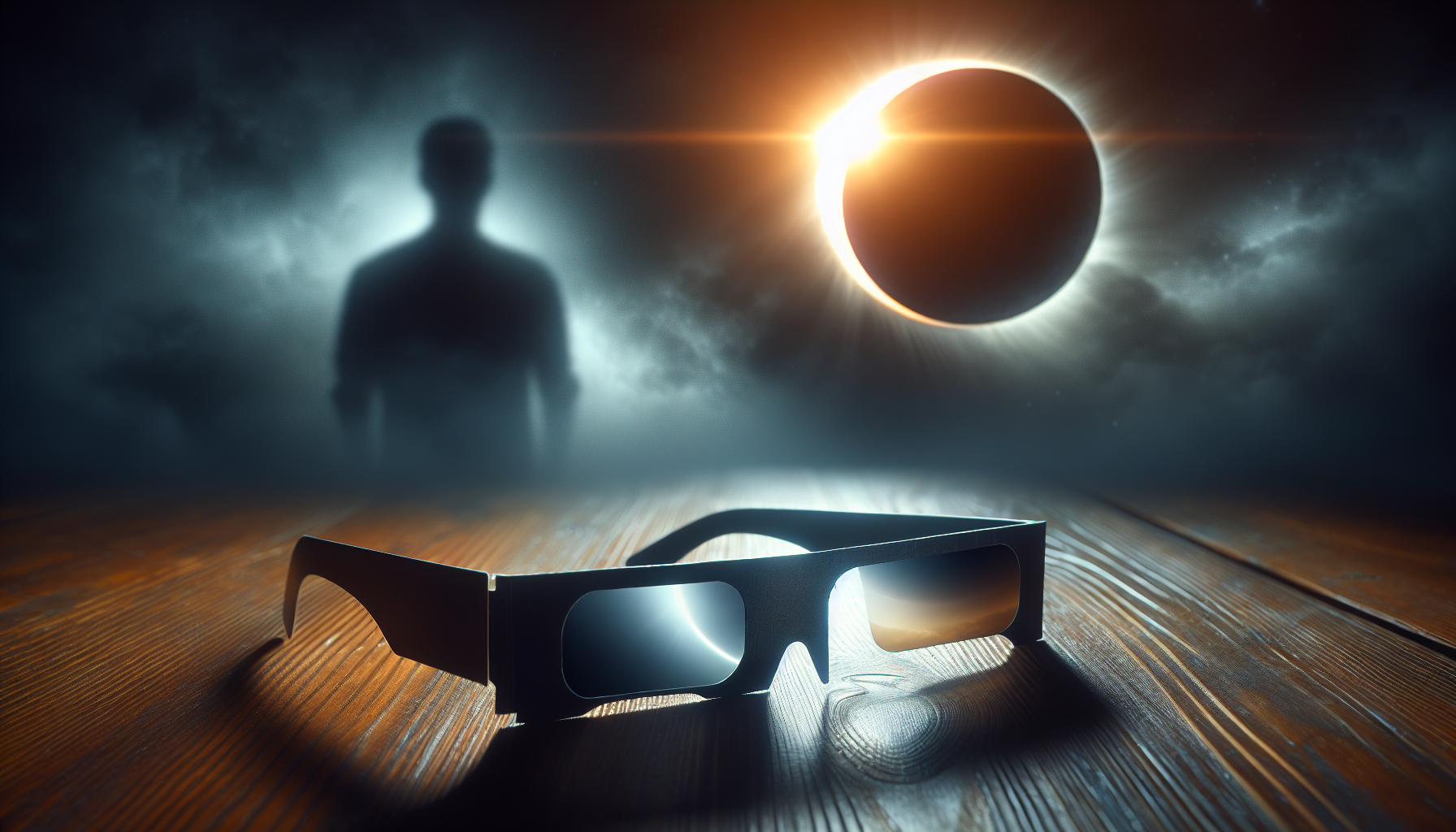
Eclipse glasses serve as your protective shield against harmful solar rays. These specialized spectacles protect your eyes from the Sun’s harmful rays by filtering out intense sunlight. Regular sunglasses might seem like a viable alternative, but they’re not.
Designed to be 100,000 times darker than regular sunglasses, eclipse sunglasses guarantee superior protection for your eyes from the sun’s harsh rays.
The Science Behind Eclipse Glasses
Solar eclipse glasses and viewers are marvels of science. They are designed with special-purpose solar filters that are at least 1,000 times darker than ordinary sunglasses, specifically to protect eyes when wearing eclipse glasses during a solar eclipse. These lenses use materials like a black polymer or a silvered substrate to absorb or reflect UV and infrared rays, while reducing visible light to a safe level.
Their unique design allows them to block all harmful ultraviolet and infrared light, along with 99.99% of intense visible light – a critical feature for preventing severe eye injuries or blindness.
Types of Solar Eclipses
Solar eclipses come in three main forms: partial, total, and annular. During a total solar eclipse, the moon completely blocks the sun, and the day temporarily turns into night.
An annular solar eclipse occurs when the moon covers the center of the sun, leaving a ring-like appearance called the ‘ring of fire’. Partial solar eclipses happen when only a part of the sun is obscured by the moon, leading to a varying degree of coverage depending on your location.
Key Features of Quality Eclipse Shades
For safe solar viewing, quality eclipse shades should adhere to the ISO 12312-2 standard and possess an optical density of 5 or higher. These shades are constructed with:
- a scratch-resistant, black polymer or reflective coated material
- usually with a layer of aluminum
- to block 100% of harmful ultraviolet and infrared rays
- and 99.99% of intense visible light.
Top Picks for Eclipse Glasses in 2024
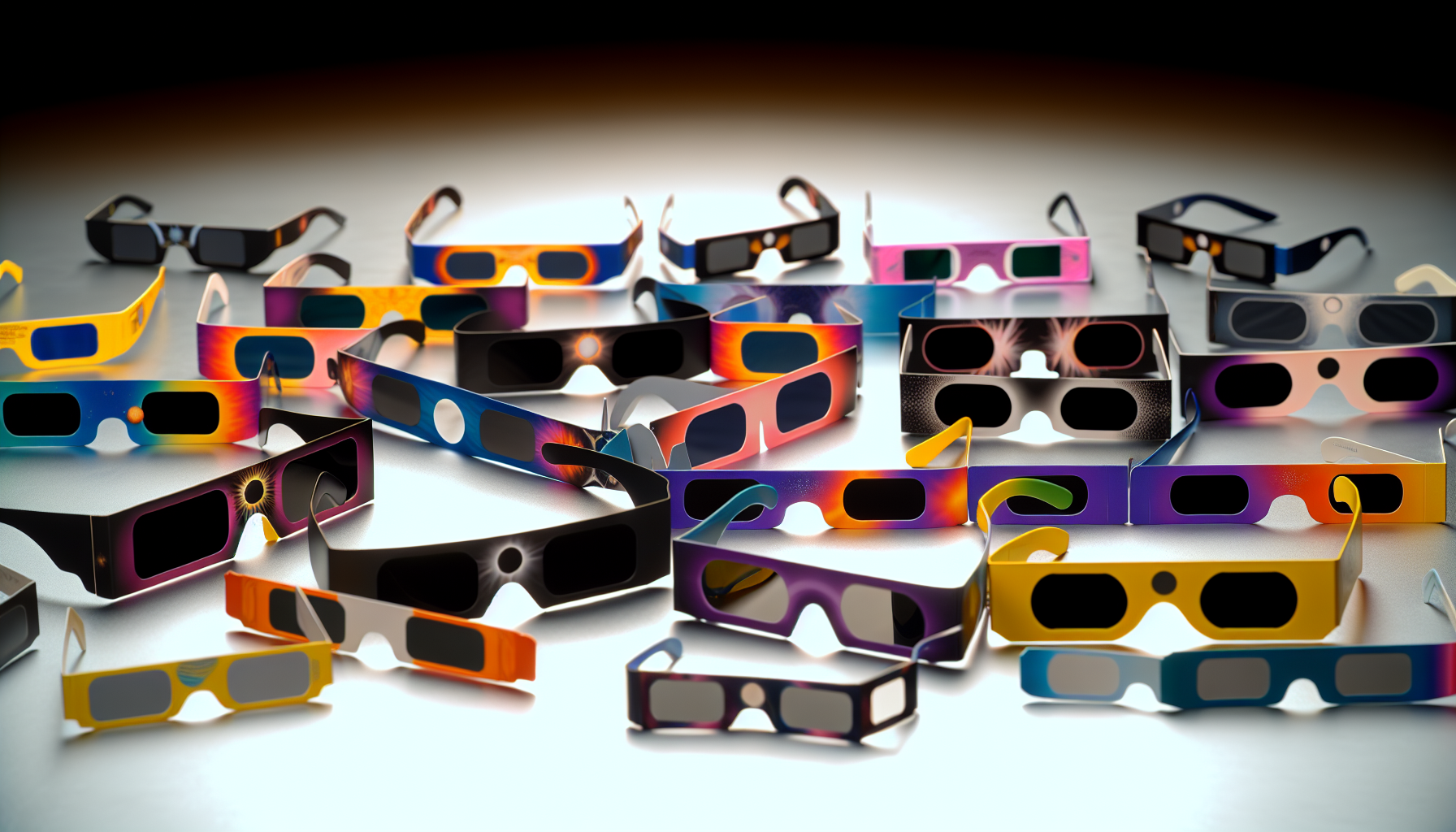
Sifting through the numerous options of eclipse glasses on the market can seem daunting. So, we’ve done the research to simplify your selection process. We’ve selected the top eclipse glasses for 2024 based on quality, value, and user experience, ensuring your solar viewing is not only safe but also enjoyable.
5 of the Best Overall Eclipse Glasses Available on Amazon
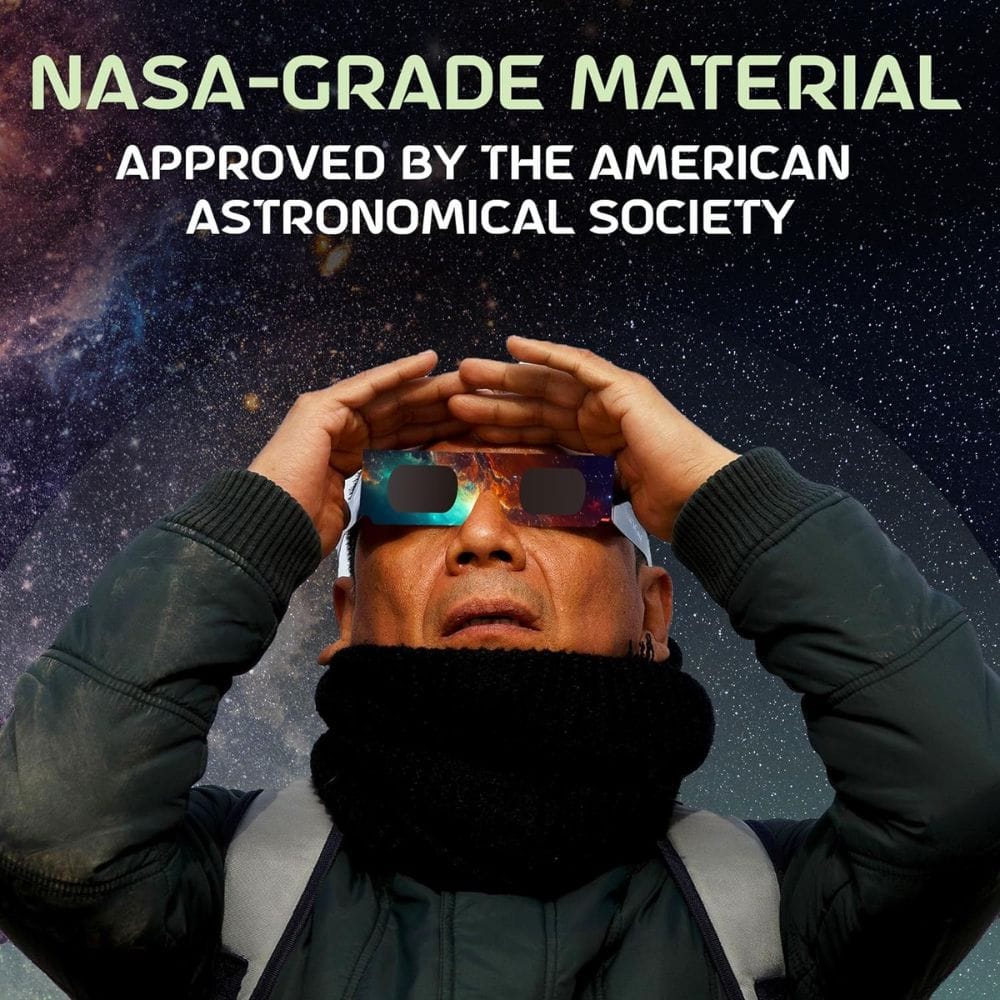
Helioclipse 12 Pack Solar Eclipse Glasses 2024
Lenses Made in USA NASA-Grade AAS Approved - Trusted for Direct Eclipse Viewing - ISO 12312-2 & CE Certified
"These were really good and the price was great. My family used them to look at the eclipse, and we also had enough to share with other people. Thanks to the company who made them it was so fun to be able to share the experience with strangers around us. I appreciate the fact that they are approved by Nasa for viewing this stunning event." Amazon Review by Nice and Neat
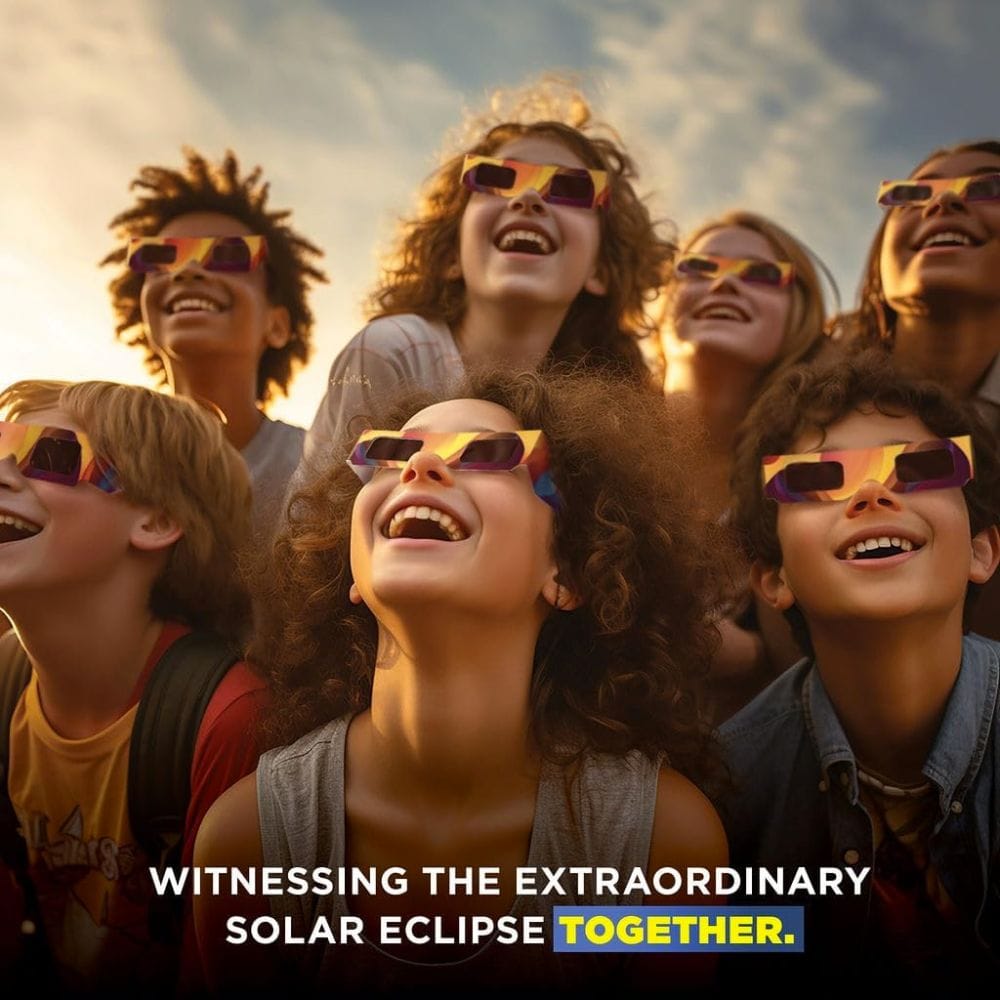
Medical king Solar Eclipse Glasses (10 pack)
2024 CE and ISO Certified Approved
"Preparing early for April's full eclipse. Read somewhere that it would be difficult to get these glasses as it gets closer to that date. These were very reasonably priced arrived well packaged, and look as though they will do the job." Amazon Review by DocPossum
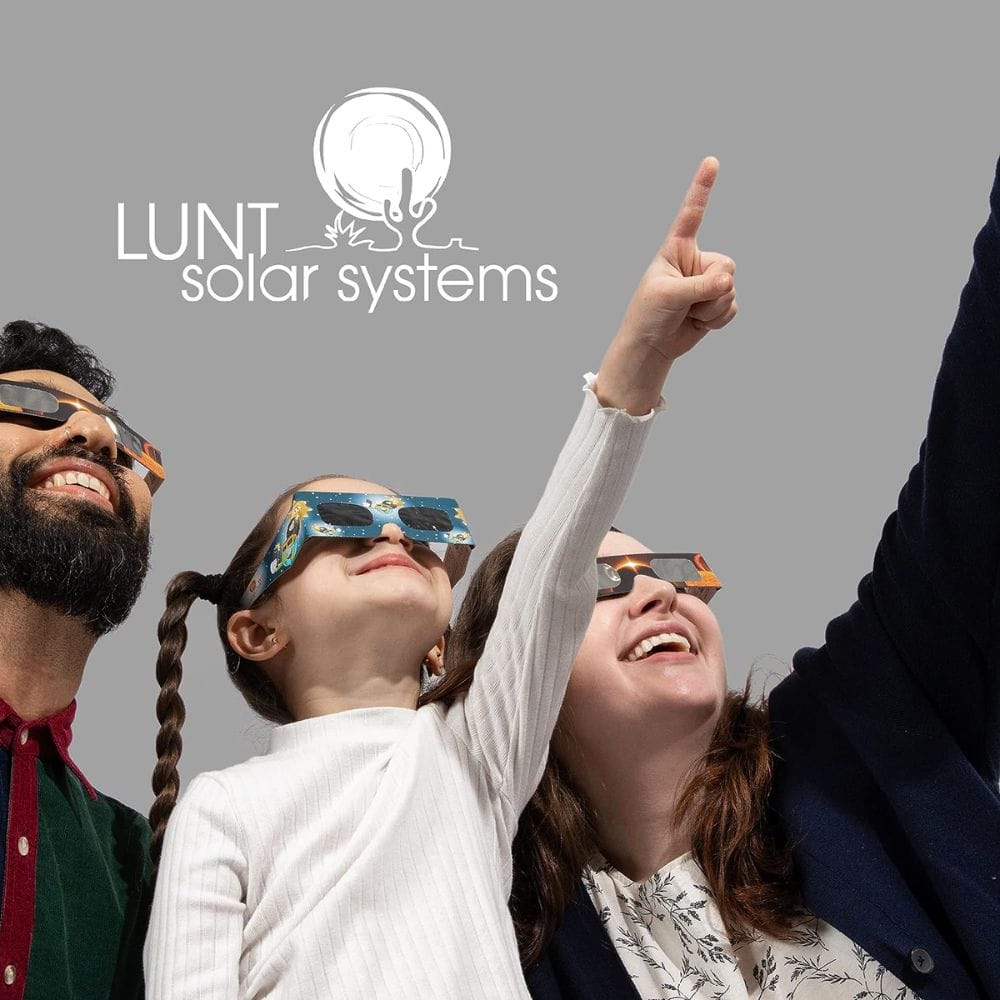
LUNT SOLAR SYSTEMS 5 Pack Eclipse Glasses
Approved 2024, CE and ISO Certified, AAS Approved,
"Great little glasses to protect the eyeballs from the sun. Cheap materials but did the job for the eclipse." Amazon Review by Jessica
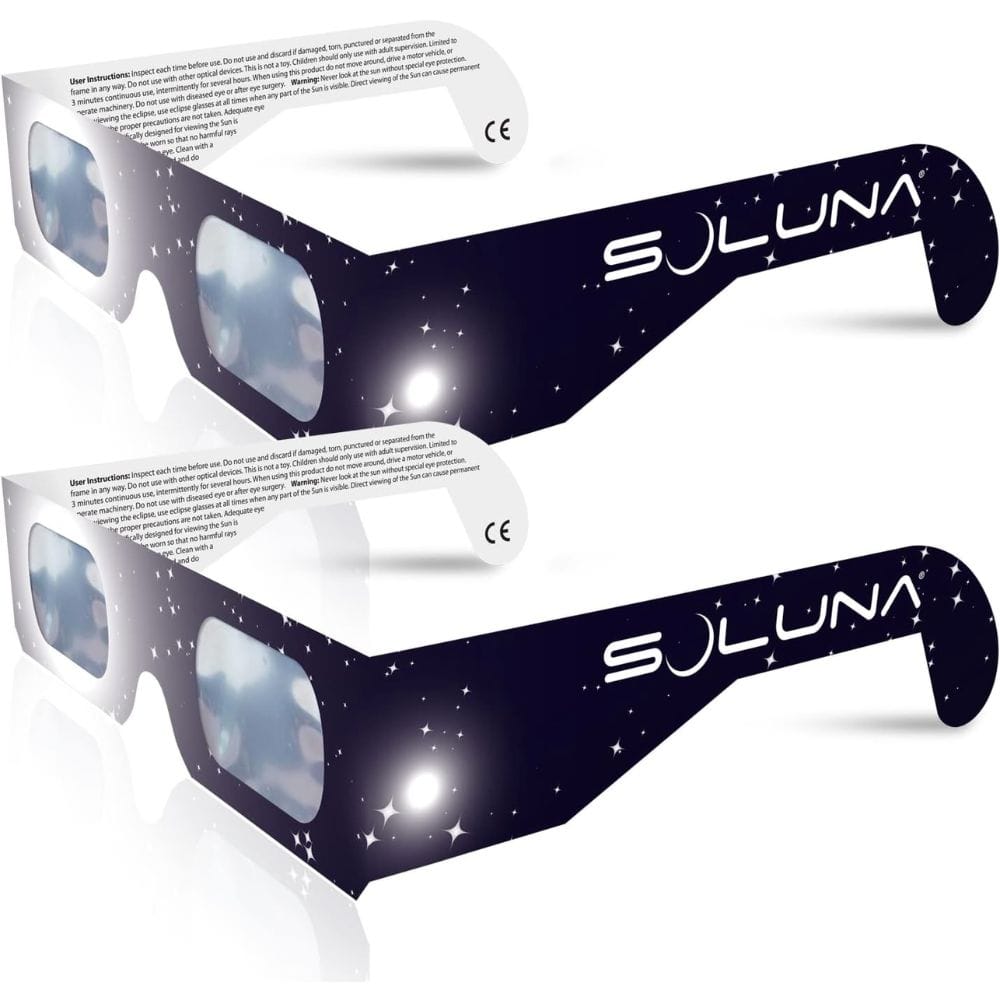
Soluna Solar Eclipse Glasses
CE and ISO Certified Safe Shades for Direct Sun Viewing - Made in the USA (2 Pack)
"These worked great. I watched the recent "Ring of Fire" eclipse using these lenses. I could see the event happening quite clearly - given the fact that I was looking through what was essentially a welding lens. My only complaint about these lenses is that they are very compact - easy to misplace. I know this for a fact. This does not detract from the truth that these are very good solar eclipse glasses." Amazon Review by Brent54321
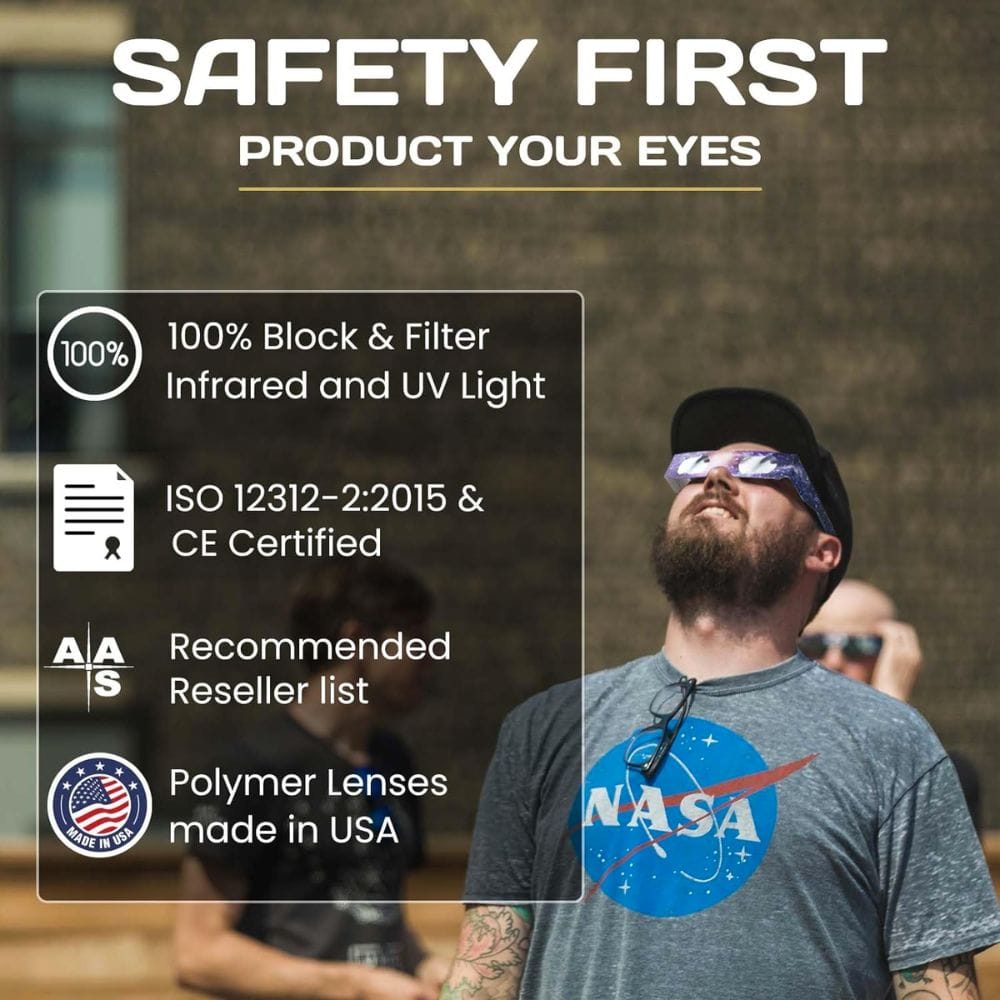
TESYKER Eclipse Glasses, 12 Pack ISO 12312-2:2015(E) & CE Certified Paper Solar Eclipse Glasses
Safety Solar Eclipse Viewing, Direct Sun Observation
"Received and used it to look directly at the sun (sans any eclipse). It worked really well. The sun was brilliant, but no eye strain. Sun was crisp and easily viewable. During an eclipse these will work fantastically. While wearing you’re pretty much blind. Everything is black until you look at the sun." Amazon Review by Michael M
Safeguarding Your Eyes: The Importance of ISO-Certified Eclipse Glasses
Experiencing a solar eclipse is undoubtedly exhilarating, but prioritizing your eye safety is paramount. Achieving this requires the use of ISO-certified eclipse glasses. ISO 12312-2 certified eclipse glasses block 100% of harmful UV light and infrared light, and 99.999% of intense visible light, making them essential for eye safety during solar viewing.
Recognizing Genuine ISO Certification
Genuine ISO 12312-2 compliance ensures safe solar viewing by meeting strict safety standards. To guarantee genuine ISO 12312-2 compliance, eclipse glasses should be purchased from reputable vendors who provide documentation from properly accredited testing facilities.
Where to Purchase ISO Approved Eclipse Glasses
When you buy ISO-approved eclipse glasses from trusted vendors, you’re assured of both safety and quality. Always avoid purchasing from unverified online advertisements or search results to avoid the possibility of receiving counterfeit products.
Alternative Solar Viewers for Direct Solar Viewing
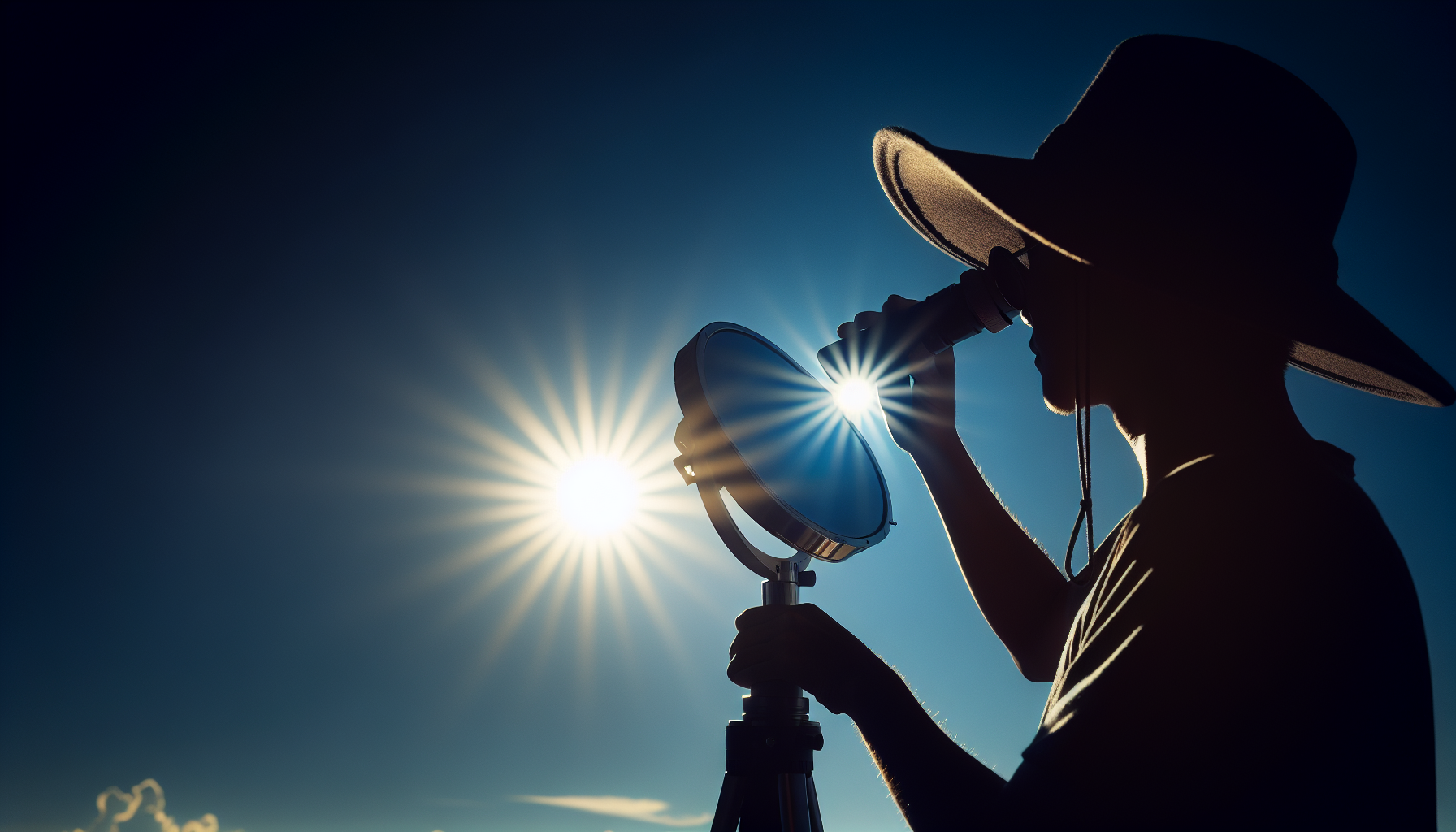
If glasses aren’t your style, don’t fret. You have other safe options for direct solar viewing, like handheld solar viewers, welding filters, and filters for telescopes or binoculars, all designed to protect your eyes while looking directly at the sun.
Handheld Solar Viewers
Handheld solar viewers, also known as handheld solar viewer, are specifically designed for safe solar observation and reduce sunlight to safe levels to prevent eye injury. These can come as solar viewing cards, typically the size of 3-by-5-inch index cards, and are made of lightweight cardboard for convenient use during one-time events like solar eclipses.
Suitable Welding Filters for Eclipse Watching
Welding filters with Shade 12 or higher are suitable for safe eclipse watching. They are not only safe but many individuals find the experience of viewing through Shade 13 or 14 filters more comfortable.
Telescope and Binocular Filters
Telescope and binocular filters allow for safe solar viewing through optical devices. These filters are designed to fit securely over the end of binoculars or telescopes, ensuring a tight and secure fit.
Eclipse Glasses for Kids: Ensuring Safety for Young Astronomers
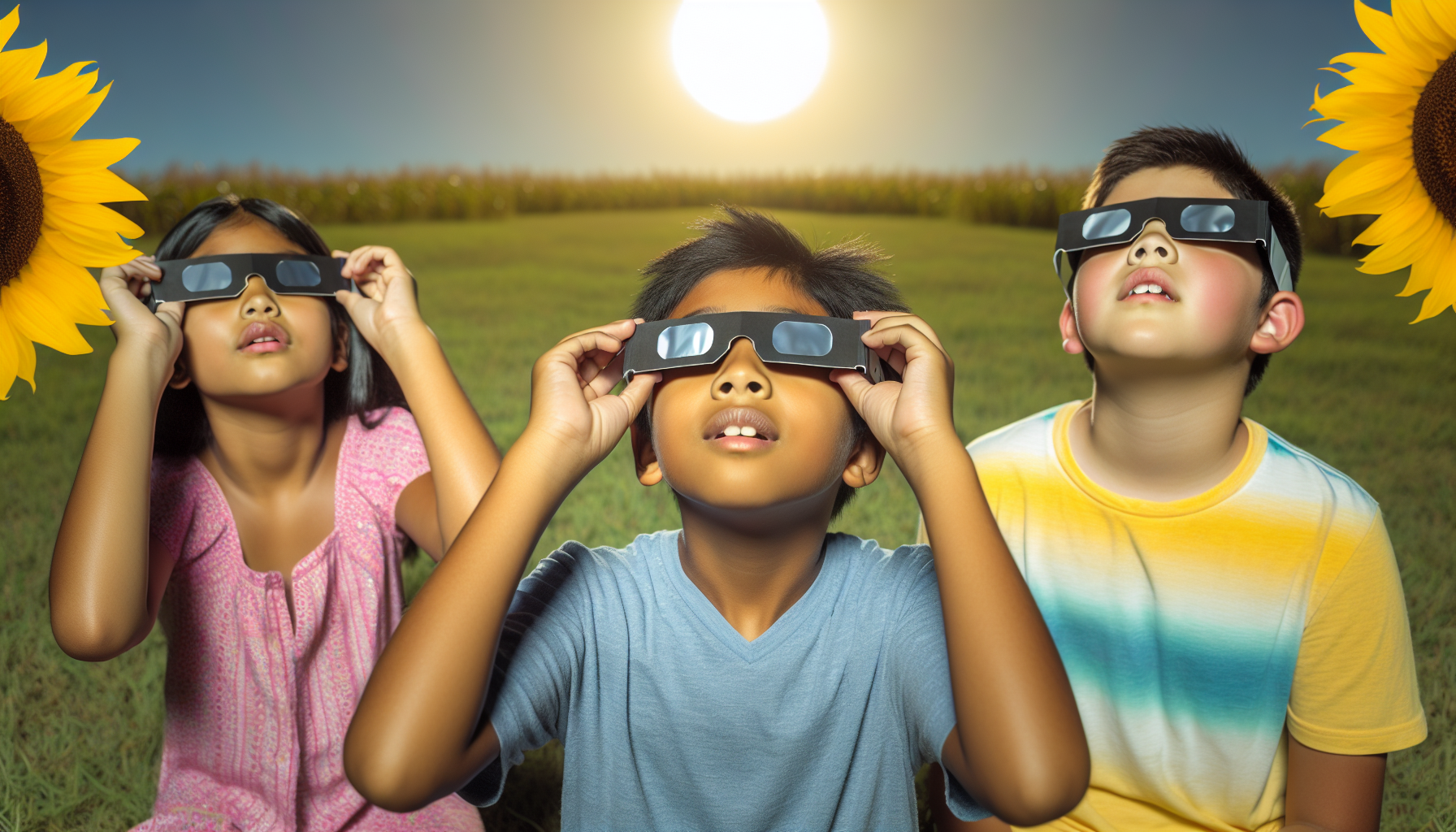
Eclipse viewing is an activity for all ages. Young astronomers can partake in this exciting event, but their safety is of utmost importance.
Let’s explore how we can ensure their safety during solar viewing.
Selecting the Right Fit for Children
When selecting eclipse glasses for children, ensure they are:
- Specifically designed for smaller faces
- Easily adjustable for secure and comfortable use
- Engaging and colorful designs to help engage their interest and encourage them to wear the glasses during solar events.
Educational Value of Eclipse Viewing
Eclipse viewing isn’t just fun, it’s educational too. Witnessing a solar eclipse through proper eclipse glasses can fascinate children and prompt them to ask questions about the universe, potentially fostering a lifelong interest in astronomy.
An eclipse provides children with hands-on learning experiences, enhancing their understanding of scientific concepts and appreciation of astronomical events.
Caring for and Storing Your Eclipse Glasses
Taking proper care of your eclipse glasses and storing them correctly will ensure their longevity and continued effectiveness in safe solar viewing. Let’s delve into some tips on how to do this.
Inspection and Maintenance
Regular inspection and maintenance of your eclipse glasses help to identify any damage that could compromise their protective properties. Always check the filters to ensure they only allow you to see the Sun itself or something comparably bright, and that direct observation does not cause discomfort or a bright haze around the Sun.
Storage Tips
Proper storage of your eclipse glasses is paramount. They should be stored in a rigid case to prevent bending or scratching, safeguarding their integrity for future use.
Maintaining a room-temperature environment for storage prevents damage to eclipse glasses from extreme temperatures.
Capturing the Moment: Photography Through Eclipse Glasses

Looking to capture this celestial spectacle forever? Using eclipse glasses, you can safely photograph the solar eclipse. But, there’s a right way to do this. Let’s explore.
Using Eclipse Glasses with Cameras
Attaching eclipse glasses in front of a camera lens allows photographers to safely capture images of the sun during a solar eclipse. However, remember to set your camera to manual focus because the dark filter typically prevents the camera’s autofocus from functioning correctly.
Recommended Camera Settings
Camera settings matter when photographing a solar eclipse. Use a fixed aperture between f/8 and f/16 for digital photography of the solar eclipse, and test shutter speeds from 1/4000 second to 1/30 second on an un-eclipsed sun for ideal exposure settings.
Photograph the eclipse in RAW format to have greater flexibility in exposure adjustment during post-processing.
Summary
With the right knowledge and tools, you can safely enjoy the awe-inspiring spectacle of a solar eclipse. From understanding the science behind eclipse glasses to exploring alternative solar viewers and ensuring children’s safety, this guide has covered all you need to know. Remember, your eyes are precious. Protect them and enjoy the celestial spectacle safely.
Frequently Asked Questions
What glasses do you need for an eclipse?
To view a solar eclipse, it is crucial to wear solar eclipse glasses recommended by the American Astronomical Society to avoid eye damage, as regular sunglasses are not safe for viewing the Sun.
What makes eclipse glasses safe?
Eclipse glasses are safe when they meet the ISO 12312-2 international safety standard, ensuring they have a special solar filter to block harmful UV, infrared rays, and limit visible light. This standard also ensures that the glasses reduce visible sunlight to safe levels and block the majority of solar UV and IR radiation.
How long can you look at the solar eclipse with glasses?
You can look at the unclipsed or partially eclipsed Sun through ISO 12312-2 compliant glasses for as long as you wish. It is safe to reuse them indefinitely if the filters are not damaged.
What is the difference between eclipse glasses and sunglasses?
Eclipse glasses transmit about 0.001% or less of visible light and even less UV, while regular sunglasses only transmit about 20% of light, which is not safe for directly viewing the sun. Regular sunglasses do not offer sufficient protection against harmful solar radiation during eclipses.
Can I use my camera to capture the solar eclipse?
Yes, you can use your camera to capture the solar eclipse by attaching eclipse glasses in front of the camera lens. Capture this awe-inspiring event safely.

